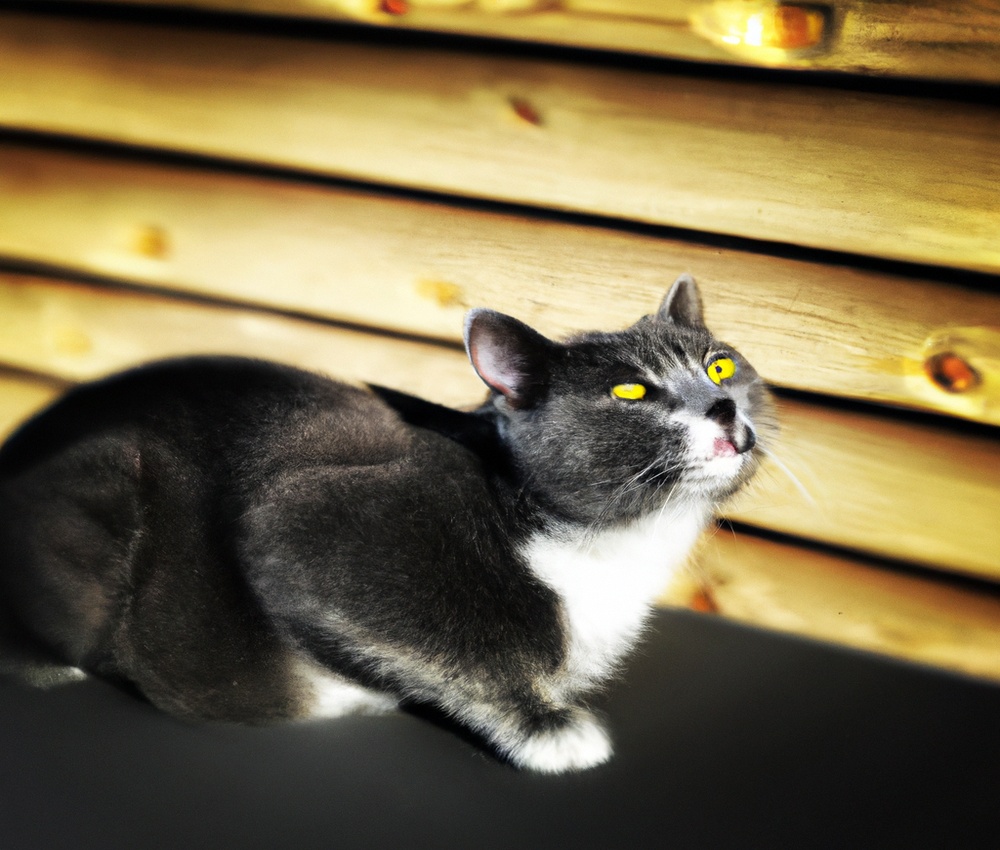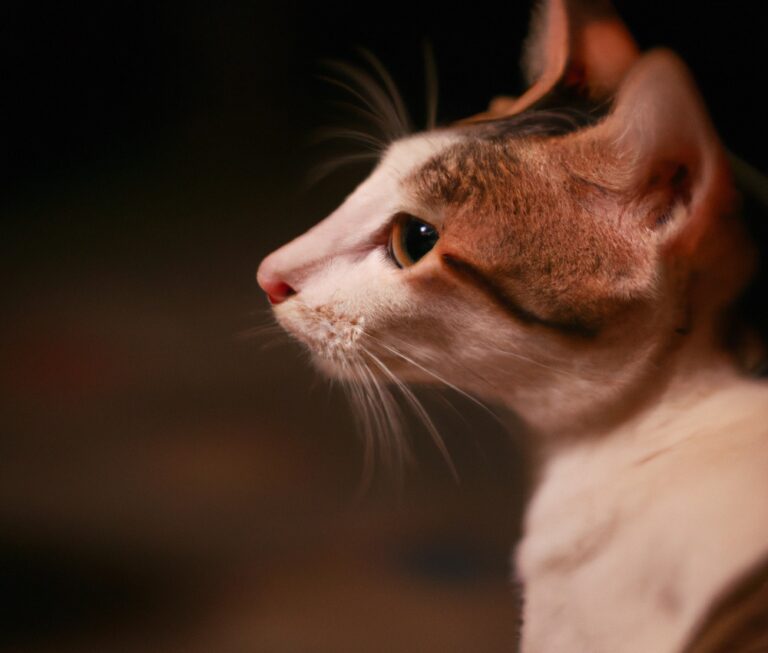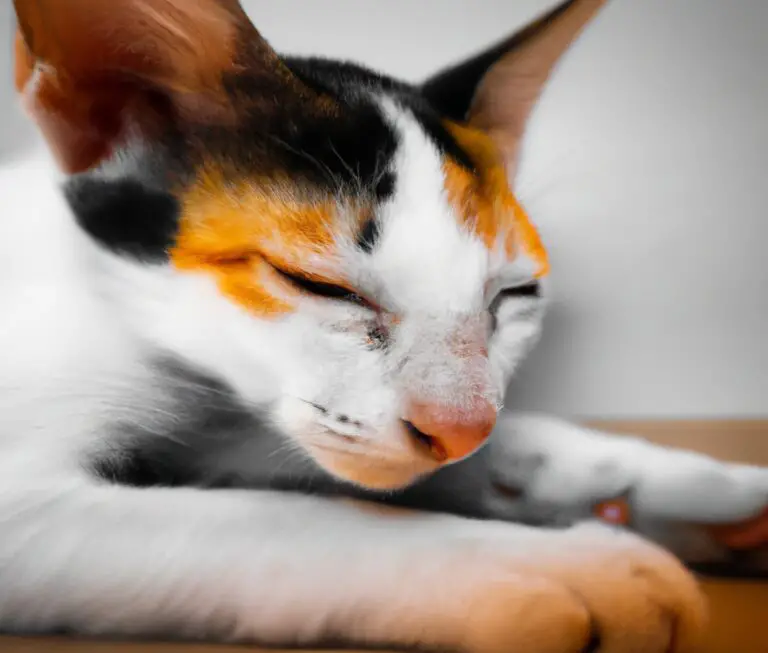Is It OK For My Cat To Sleep Under The Covers?
Key Takeaways:
- It is generally safe for your cat to sleep under the covers, as long as they have enough space to breathe comfortably.
- However, you should monitor your cat closely to ensure they do not overheat or feel trapped.
- Cats may seek warmth under the covers, but make sure there are no potential hazards that could harm them.
- Pay attention to your cat’s behavior and comfort level when they sleep under the covers to determine if it is suitable for them.
Have you ever woken up in the middle of the night, only to find your furry feline snuggled up under the covers next to you? It’s adorable, no doubt, but is it safe for your cat?
As a seasoned cat owner, I’ve often wondered about the ins and outs of this cozy habit.
In this article, we’ll explore why cats have a penchant for sleeping under the covers, the considerations you should keep in mind before allowing it, and how to create a safe and comfortable sleeping environment for your feline friend. So, let’s dive in and uncover the secrets behind your cat’s under-the-covers adventures!
| Question | Answer |
| Is it OK for my cat to sleep under the covers? | Yes, but it depends on the individual cat’s preferences and health condition. |
Why Do Cats Like to Sleep Under the Covers?
Cats enjoy sleeping under the covers because it satisfies their natural instincts and provides them with comfort and security.
Additionally, it helps them regulate their body temperature.
The Natural Instinct of Cats
Cats have a natural instinct to seek out cozy, enclosed spaces for sleep, which could explain why they like to sleep under the covers.
This behavior is rooted in their ancestral instincts for warmth and safety.
Cats are instinctually drawn to dark, warm, and secure areas, as it makes them feel protected and secure.
Under the covers provides them with a sense of security and comfort.
It is perfectly okay for your cat to sleep under the covers as long as they have a way to come out easily and are not inadvertently restricted or harmed in any way.

Finding Comfort and Security
Finding comfort and security is one of the main reasons why cats like to sleep under the covers.
It provides them with a cozy and snug environment that makes them feel safe and protected.
Curling up under the covers can replicate the feeling of being in a den or a hiding spot, which is instinctively comforting for cats.
Additionally, the warmth generated by the blankets can also offer a soothing sensation, helping them relax and fall asleep more easily.
So if your cat enjoys sleeping under the covers, it’s perfectly fine as long as they are comfortable and not restricted in any way.
Regulating Body Temperature
Regulating body temperature is essential for cats, just like for humans. Cats are naturally prone to thermoregulation, and sleeping under the covers is one way they achieve it.
By snuggling under the covers, cats can conserve body heat and stay warm.
It mimics the feeling of being in a cozy den or a warm mother’s belly. However, it’s important to ensure that the cat has enough airflow and doesn’t get too hot.
As long as your cat seems comfortable and can move freely, it’s generally okay for them to sleep under the covers.
Things to Consider Before Allowing Your Cat to Sleep Under the Covers
Before letting your cat sleep under the covers, consider potential allergies and asthma, safety concerns, and the possibility of disrupted sleep.
Safety Concerns
Safety Concerns It’s important to consider a few safety concerns before allowing your cat to sleep under the covers. Here are a few key points to keep in mind:
- Overheating: Cats are more prone to overheating than humans. Make sure your cat has enough space to move and that the covers are not too thick, causing excessive heat buildup.
- Suffocation: Ensure there’s enough ventilation under the covers to prevent suffocation. Your cat should always be able to easily move in and out.
- Allergies: If you have allergies, you might want to avoid allowing your cat under the covers. The close proximity may trigger allergic reactions during sleep.
- Sleep disruptions: Cats can be playful and active at night, potentially disturbing your sleep while they are under the covers. Consider how it may affect your sleep quality.
By keeping these safety concerns in mind, you can make an informed decision about whether to allow your cat to sleep under the covers.
Disrupted Sleep
Disrupted Sleep: If your cat sleeps under the covers with you, it may lead to disrupted sleep for both of you.
Your cat’s movements, purring, or scratching could wake you up throughout the night.
Additionally, your cat may unintentionally scratch or bite you while shifting positions.
This can disturb your sleep and leave you feeling tired the next day.
It is important to consider the potential consequences of allowing your cat under the covers before making a decision.

Ensuring Safety while Sleeping with Your Cat
Make sure to choose the right bedding and establish boundaries to ensure safety while sleeping with your cat. Also, pay attention to your cat’s behavior and monitor it closely during the night.
Choosing the Right Bedding
When it comes to choosing the right bedding for your cat, there are a few things you should consider. Firstly, opt for bedding that is soft and comfortable for your cat.
Look for materials like fleece or plush fabric.
Secondly, choose bedding that is easy to clean. This will make your life easier and keep your cat’s sleeping space fresh.
Lastly, avoid bedding that has strings or loose threads, as these can be a choking hazard.
By considering these factors, you can ensure your cat has a cozy and safe place to sleep.
Establishing Boundaries
Establishing boundaries is important when sleeping with your cat. Here are some tips:
- Create a designated sleeping area for your cat, such as a cozy cat bed.
- Use positive reinforcement to teach your cat where they can and cannot sleep.
- Set clear rules and consistently enforce them.
- Provide alternative sleeping options, such as a cat tree or blanket, to redirect your cat’s attention.
- Be patient and understanding as it may take time for your cat to adjust to the boundaries.
- Seek advice from a veterinarian or animal behaviorist for specific strategies tailored to your cat’s needs.

Monitoring Your Cat’s Behavior
Monitoring your cat’s behavior is important for their overall health and well-being.
Here are a few things to keep in mind:
- Watch for any changes in appetite, litter box usage, or grooming habits. These could be signs of underlying health issues.
- Pay attention to your cat’s energy levels. Sudden lethargy or hyperactivity may indicate a problem.
- Monitor how your cat interacts with you and other pets. Keep an eye out for any signs of aggression or excessive fear.
- Observe their sleeping patterns and how they react to certain environments or stimuli.
- Take note of any unusual behaviors, such as excessive scratching, meowing, or hiding.
By staying vigilant and noticing any changes or abnormal behaviors, you can address potential issues early on and ensure your cat stays healthy and happy.
Steps to Introduce Your Cat to Sleeping Under the Covers
You can gradually introduce your cat to sleeping under the covers.
Gradual Introduction
Introducing your cat to sleeping under the covers is a process that should be done gradually. Start by leaving a blanket or towel on the bed for your cat to get used to the scent.
Then, encourage your cat to explore the bed during the day.
Gradually increase the amount of time your cat spends on the bed until they feel comfortable sleeping under the covers. This gradual approach will help your cat adjust slowly and reduce any potential anxiety they may have.
Positive Reinforcement
Positive reinforcement is a powerful tool when it comes to training your cat to sleep under the covers. It involves rewarding your cat with praise, treats, or play whenever they display the desired behavior, such as snuggling under the covers.
This positive association encourages your cat to repeat the behavior.
Use a consistent signal, like a clicker, to mark the desired behavior and immediately reward your cat. Do this consistently, and your cat will learn to love sleeping under the covers in no time.
Consistency and Patience
Consistency and patience are key when introducing your cat to sleeping under the covers. It’s important to establish a consistent routine and stick to it.
This means creating a designated sleeping spot for your cat under the covers and encouraging them to use it every night.
Patience is also necessary because it may take some time for your cat to adjust to this new sleeping arrangement. They may be unsure or uncomfortable at first, so it’s important to give them space and allow them to go at their own pace.
Avoid rushing or forcing your cat to sleep under the covers, as this can create a negative association.
Instead, be patient and allow them to explore and adapt to the new sleeping arrangement in their own time. Consistency and patience will help your cat feel more comfortable and secure when sleeping under the covers.
Alternatives to Allowing Your Cat to Sleep Under the Covers
Looking for alternatives to letting your cat sleep under the covers?
Here are some ideas!
Providing a Warm and Cozy Bed
To provide your cat with a warm and cozy bed, there are a few things you can do. Firstly, choose a bed that is the right size for your cat.
It should be big enough for them to stretch out comfortably.
Secondly, consider the material of the bed. Opt for something soft and plush, like fleece or faux fur, that will help retain heat.
Thirdly, place the bed in a warm and draft-free area of your home.
This will help your cat stay warm while they sleep. Overall, by considering these factors, you can ensure your cat has a cozy spot to relax and snooze in.
Creating a Cat-Friendly Sleeping Area
Creating a cat-friendly sleeping area is essential to ensure your furry friend feels safe and comfortable.
Here are a few tips to help you create the perfect space for your cat to sleep:
- Provide a cozy bed or cushioned mat specifically designed for cats. This will give them a designated spot to relax and unwind.
- Choose a location away from loud noises and high traffic areas, allowing your cat to enjoy a peaceful sleep.
- Consider placing the bed near a warm and sunny spot, as cats love to bask in the sunlight.
- Add familiar scents, such as a blanket or towel with your cat’s scent, to help them feel secure and at ease.
- Ensure the sleeping area is free from any potential hazards like cords or small objects that could be ingested.
By implementing these simple steps, you can create a cat-friendly sleeping area that your feline companion will love.
Using a Heating Pad
Using a heating pad can be a cozy alternative for your cat to sleep on instead of under the covers. It provides warmth and comfort without the risk of suffocation or overheating.
Make sure to use a pet-safe heating pad with adjustable temperature settings.
Place it on a low setting and cover it with a soft blanket or towel. This will create a warm and inviting spot for your cat to relax.
Just be sure to supervise your cat while using the heating pad to ensure their safety.
Frequently Asked Questions
Is it safe for my cat to sleep under the covers?
Is it safe for my cat to sleep under the covers? While it may seem cozy, it’s important to consider a few factors.
Firstly, keeping a cat under covers could lead to overheating or suffocation.
Additionally, it may increase the risk of accidents if you roll over the cat unknowingly. If your cat enjoys sleeping under covers, ensure there is enough ventilation and they can easily escape if needed.
Consulting with your veterinarian is always a good idea to ensure your cat’s safety and well-being.
How can I prevent allergens from bothering me if my cat sleeps under the covers?
If your cat sleeps under the covers with you, you may be concerned about allergens affecting your sleep.
Here are some tips to prevent allergens from bothering you in this situation:
- Keep the bedroom clean: Regularly vacuum and dust your bedroom to minimize allergens like cat dander.
- Use allergy-proof bedding: Consider using allergen-proof mattress and pillow covers to create a barrier against allergens.
- Wash bedding frequently: Wash your bedding, including sheets, pillowcases, and blankets, in hot water regularly to remove any allergens that may have accumulated.
- Create a designated pet-free zone: If possible, establish a pet-free area in your bedroom to reduce allergen exposure while sleeping.
- Groom your cat regularly: Brushing your cat regularly can help reduce shedding and limit the amount of cat dander in your home.
- Consider an air purifier: Investing in an air purifier with a HEPA filter can help capture and remove airborne allergens.
Why does my cat knead and purr when sleeping under the covers?
Cats knead and purr when sleeping under the covers due to a combination of comfort and instinct.
Kneading is a natural behavior that kittens do to stimulate milk flow from their mother.
As adults, they may knead to show contentment and mark their territory with scent glands in their paws.
Purring is a sign of relaxation and contentment.
So, when your cat sleeps under the covers, they likely feel safe, warm, and secure, leading to kneading and purring.
Final Verdict
It is generally safe for cats to sleep under the covers, as it aligns with their natural instincts, provides comfort and security, and helps regulate their body temperature. However, it is important to consider allergies, safety concerns, and potential sleep disruptions before allowing your cat to sleep under the covers.
If you decide to let your cat sleep under the covers, choose the right bedding, set boundaries, and monitor their behavior to ensure their safety.
Alternatively, you can provide a warm and cozy bed, create a cat-friendly sleeping area, or use a heating pad as alternatives. Remember to introduce your cat gradually, use positive reinforcement, and be consistent and patient.







